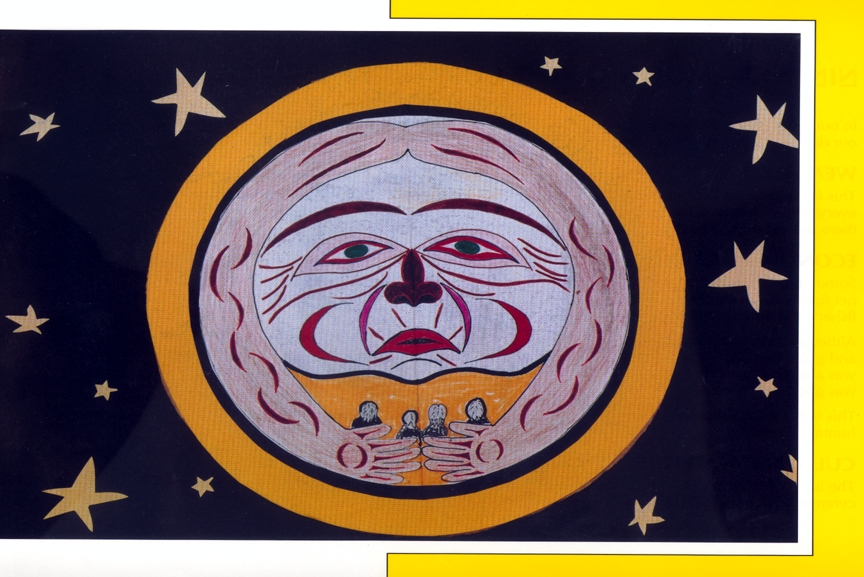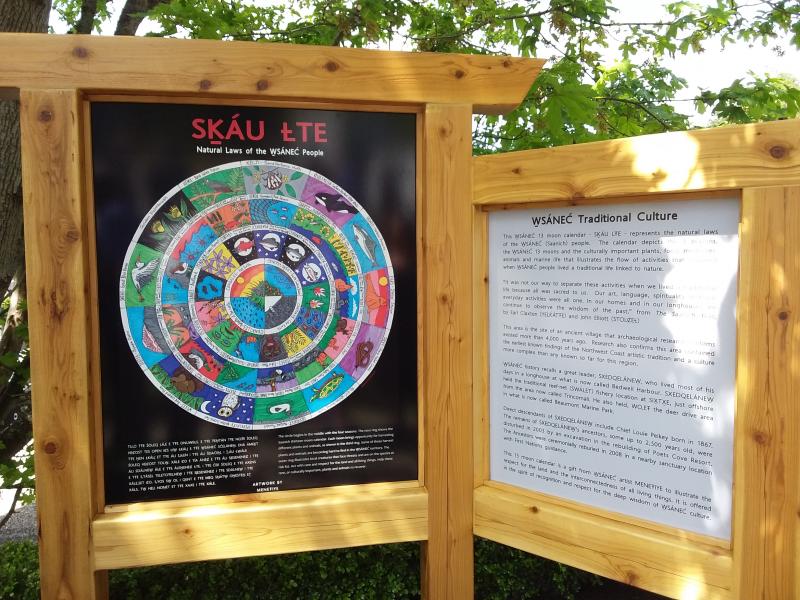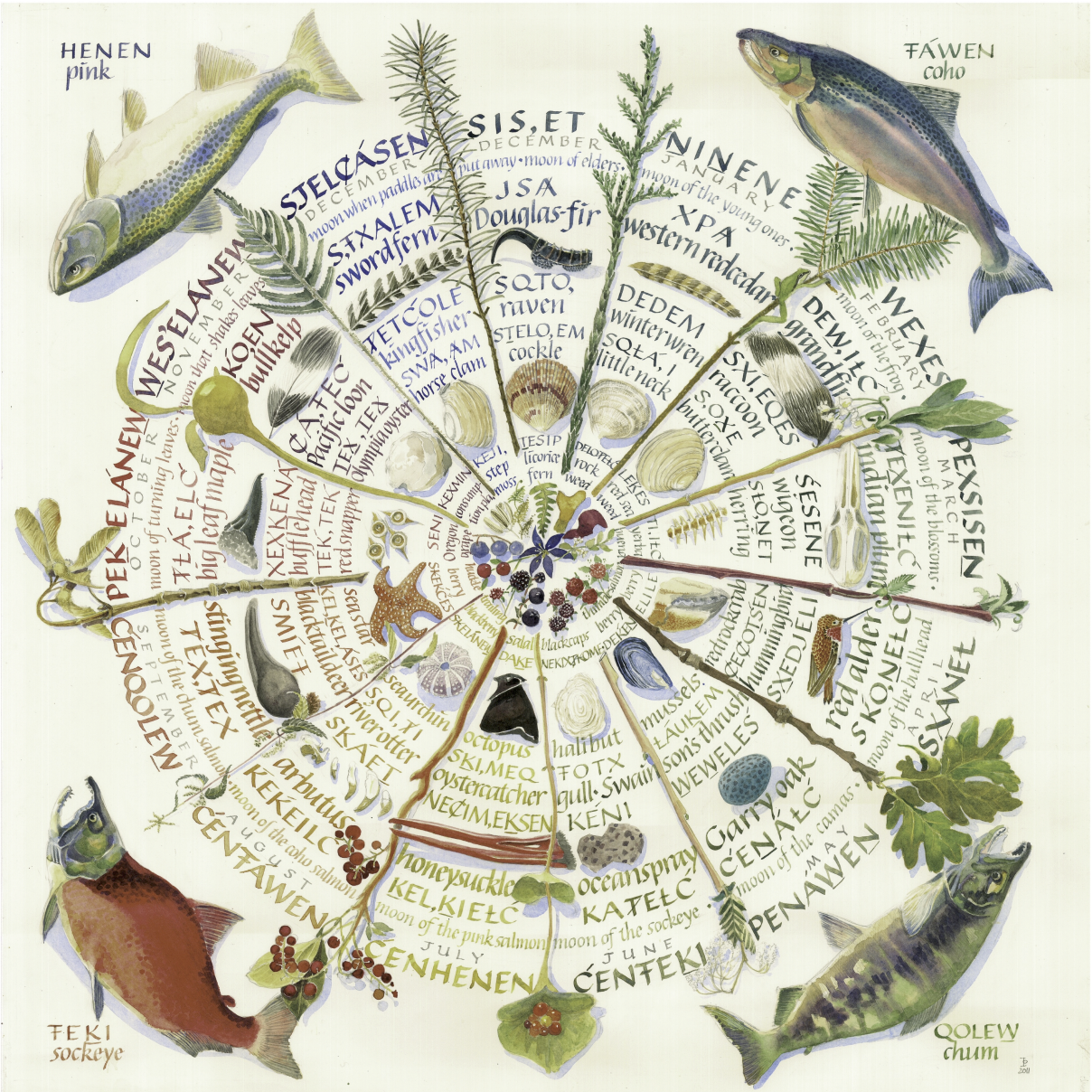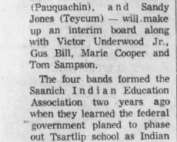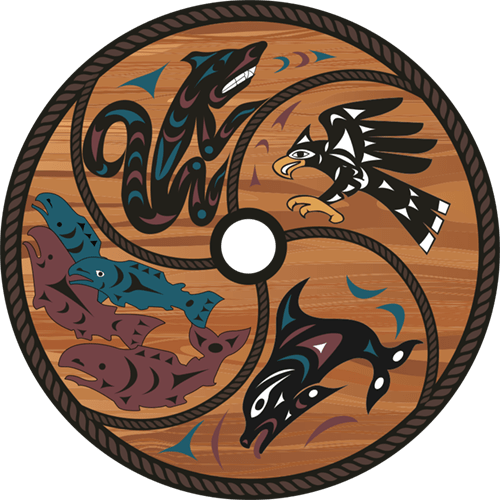This time of year, around what is now called December , is traditionally known as SIS,ET – THE ELDER MOON.
SIS,ET – THE ELDER MOON (December)
The Elder’s hair holds and shields the elderly people who share the teachings, the beliefs, the history and the culture with the children who are gathered in the warmth of the firelight.
CONNECTIONS AND BACKGROUND INFORMATION
This is the oldest of the moon family and means the elder. It is also the time when teaching occurs. This is the last in the yearly cycle of the moons. At this time of year the earth is at its farthest point from the sun and the Winter Solstice occurs (December 20/21). As with the Summer Solstice, this day holds great importance in many cultures.
WEATHER
Days are short and storms and heavy rainfalls make sea travel unpredictable and unsafe. Therefore much more time is spent indoors. The sloughs in and around Saanich filled with water and provided a wintering place for visiting ducks and geese.
ECONOMIC ACTIVITIES
The Saanich people had abundant stored food and therefore had time to prepare for future harvests. Wood pitch was gathered for torches and fires. Torches were used to collect shellfish during the night tides, which were common at this time of year. Ducks and geese were netted or speared on the sloughs and in protected inlets. People only ventured into the protected inlets for ocean fishing. Nettles, gathered earlier in the year, were stripped and twisted into twine to make nets, ropes and cables. Roughed out canoes were brought into the longhouse to be finished.
CULTURAL ACTIVITIES
This is the most important time of the year for spiritual and cultural activities. The Saanich Peoples were involved in Winter ceremonies and the Elders told legends and stories to educate the children about the right way to live. The Saanich Peoples gathered in the longhouse for Winter ceremonial dances. New dancers were initiated and the dances witnessed.
THINGS TO THINK ABOUT
- What does the word ‘Elder’ mean to you?
- How does your society treat its elders?
- How might we learn from our elders?
- How does this picture depict teaching to you?
- What does the ‘right way to live’ mean to you?
- What celebrations does your culture have during Winter Solstice?
- How does your life change in the winter when there is less daylight and it is colder and raining or snowing, as compared to summer?
This illustration of the W̱SÁNEĆ calendar, SḴÁU ȽTE, by artist MENEŦIYE is located on S,DÁYES (South Pender Island). The illustration depicts the four seasons, the 13 moons and the culturally important plants, food, medicines, animals and marine life.
Based on the sacred interconnectedness of all things, the observation of the 13 moons is part of W̱SÁNEĆ natural law. Each of the 13 moons provides guidance as to what cultural and economic activities are best suited for the time of year, as well as what weather to expect and what food is most abundant.
Artist Briony Penn, copyright Tsawout First Nation.
“It was not our way to separate these activities when we lived a traditional life because all was sacred to us. Our art, language, spirituality and our everyday activities were all one. In our homes and in our longhouses we continue to observe the wisdom of the past.”
~The Saanich Year, by Earl Claxton (YELḰÁTŦE) and John Elliott (STOLȻEȽ).
The 13 moons don’t line up exactly with the Gregorian 12-month calendar, but loose associations between months and the moons can be made, as shown above.
RECENT POSTS
How are we doing?
This time of year, around what is now called November and December , is traditionally known as SJELCASEN- The Moon of putting your paddle away in the bush.


